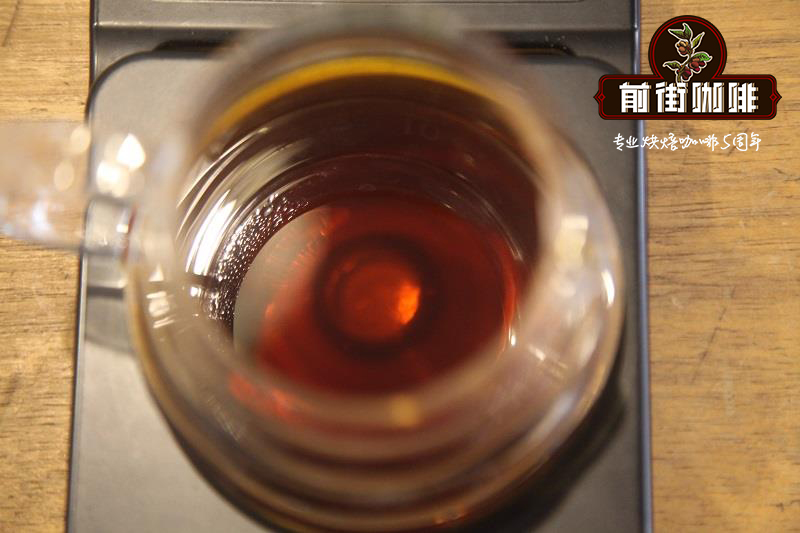The effect of altitude on Coffee Why coffee beans growing at high altitude are better?

Professional coffee knowledge exchange More coffee bean information Please pay attention to coffee workshop (Weixin Official Accounts cafe_style)
Green coffee beans are generally graded according to green bean size, defect rate, and altitude. Green bean size and defect rate are easier to understand. But why do some producing areas have to grade coffee beans according to their growing altitude, and many coffee sellers also advertise their coffee as high-altitude coffee and sell it at a high price?
The first thing to realize is that location is important to coffee bean flavor.
All coffee is grown in the tropics. In fact, altitude has no direct effect on coffee, but altitude can affect the growth and quality of coffee through the redistribution of meteorological factors (temperature, light, heat, wind speed, rainfall, etc.). The tropics between the Tropics produce the world's best Arabica coffee. Central and South America, South Asia and some Pacific islands, South Central Africa are also the most important coffee growing regions in the world. 3000-6000 The altitude of 900-2000 m provides ideal conditions for coffee growing: frost-free weather averaging 60-70 F (15-21 C) year-round, moderate rainfall of about 80 inches, and plenty of sunshine. Coffee beans in cooler mountains grow slower, and the slower ripening process makes coffee beans higher in sugar, more interesting in flavor, and more mellow. Higher elevations have higher drainage, produce more concentrated fruit flavors, and the best Arabica coffee growing areas have very fertile soils, often in volcanic areas.
Coffee beans grown at high altitudes are hard and dense and have the potential to develop special flavors. At high altitudes, these beans are carefully picked one after another only during the ripening season. In general, coffee aromas become more prominent and distinctive as altitude increases (see photo). From the mild sweetness of Brazilian beans at low altitudes of 3500 feet to the soaring taste of Ethiopian coffee beans above 6000 feet, elevation can make coffee beans better play out complex and subtle taste.
Central American coffee is rated according to the altitude at which it is grown.
Mexico, Honduras, Haiti and other countries are graded according to height: Strictly High Grown (SHG), followed by High Grown (HG)
Mexico is called Altura, which means "high" in Spanish, indicating that it is coffee grown at a high altitude; Papua New Guinea attaches a name of "Mile High" to coffee beans grown in highland mountains.
Another way, alpine areas due to the cold climate, coffee growth rate is slow, the density of raw beans is higher, the texture is harder, the coffee is more mellow aroma, and there is a soft sour; on the contrary, lower areas, the density of raw beans is small, the texture is not hard, the coffee quality is worse, so some people also use "hardness" to grade.
Guatemala, Nicaragua, El Salvador, Costa Rica and other countries are graded as follows
grade growth height grade abbreviation
Strictly Hard Bean: 1372~1524 m SHB
Good Hard Bean 914~1372 meters GHB
Hard Bean 610~914 m HB
Pacific (Pacific Coast) About 300~1000 m Pacific
Practice shows that the effect of altitude on quality has exceeded that of genotype. Viagra personally believes that the classification of coffee beans by altitude is more scientific and reasonable than simply grading by size and defect rate, because to a certain extent, the classification by altitude is indirectly graded by taste, the beans with low altitude grow fast and large, and the defect rate can be changed by selection, while altitude cannot be changed.
According to the determination, the same kind of coffee beans, the higher the altitude, the greater the acidity, the smaller the concentration; conversely, the smaller the acidity, the greater the concentration. Therefore, for friends who like fruit acid flavor and do not require high concentration, high-altitude coffee is very suitable for you, it is your good coffee; for friends who do not like fruit acid flavor and require high coffee concentration, the higher the altitude, the more unsuitable for themselves. No matter how high its quality was, it was still waste to him. Therefore, the choice of altitude should be based on personal taste.
Second, how do we know if the coffee we buy is really high altitude? Coffee growth and reproduction have specific requirements for environmental conditions, sexual preference quiet wind, warm, shade or semi-shade environment. In other words, not every environment can grow and produce coffee. Coffee production is regional. Coffee producing areas in the world are mostly distributed in tropical plateaus or high-altitude mountains. The equatorial region has high heat and can be planted to an altitude of about 2000 meters; the heat on both sides of the regression line is low, most of which are below 1000 meters. It is mainly distributed in Yunnan in China. Therefore, when making good coffee, you also need to understand the geographical climate and climate of the coffee producing area, and drink more to better understand the different flavors of coffee.
Important Notice :
前街咖啡 FrontStreet Coffee has moved to new addredd:
FrontStreet Coffee Address: 315,Donghua East Road,GuangZhou
Tel:020 38364473
- Prev

Why pick beans? What is the effect of defective beans on coffee? How coffee defective beans are formed
Professional coffee knowledge exchange more coffee bean information please follow the coffee workshop (Wechat official account cafe_style) coffee raw beans can detect more than 300 kinds of aroma compounds, coffee cooked beans are more than 850 kinds of complexity (this data is quoted from boutique coffee), but in the process of baking or brewing, there will still be bad strange smell, which is of course abhorrent.
- Next

What effect does the growing environment of coffee have on the variety of coffee? Where does coffee grow?
For more information on coffee beans, please pay attention to what kind of coffee varieties should be planted in coffee workshops (official Wechat account cafe_style). This involves complex genetic traits and ecosystems, and has become the hottest field of coffee science in recent years. (1) Coffee grown at higher altitude is more sour and fragrant, but its oil concentration is lower than that of low altitude coffee. These two
Related
- Beginners will see the "Coffee pull flower" guide!
- What is the difference between ice blog purified milk and ordinary milk coffee?
- Why is the Philippines the largest producer of crops in Liberia?
- For coffee extraction, should the fine powder be retained?
- How does extracted espresso fill pressed powder? How much strength does it take to press the powder?
- How to make jasmine cold extract coffee? Is the jasmine + latte good?
- Will this little toy really make the coffee taste better? How does Lily Drip affect coffee extraction?
- Will the action of slapping the filter cup also affect coffee extraction?
- What's the difference between powder-to-water ratio and powder-to-liquid ratio?
- What is the Ethiopian local species? What does it have to do with Heirloom native species?

